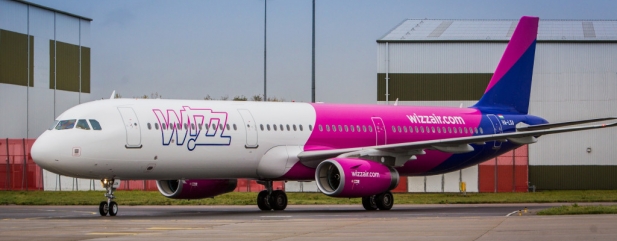Archived article
Please note that tax, investment, pension and ISA rules can change and the information and any views contained in this article may now be inaccurate.
Shares pick 2020: Wizz Air

An outstanding growth stock leaving its rivals trailing, Wizz Air (WIZZ) is structurally better placed than its peers to exploit the rise in air travel.

A low-cost airline focused on connecting travellers from Central and Eastern Europe (CEE) with the rest of the continent, Wizz has carved a niche as the biggest airline in the region.
It provides relatively low cost travel to people from CEE countries whose rising income means they can now afford to go on holiday and see more of the world.
Wizz has a clear focus in this regard with its chief executive Jozsef Varadi calling for a ban on business class, and deriding plans of rival EasyJet (EZJ) to launch package holidays as ‘paying a premium for nothing’.
By targeting countries with high GDP growth, Wizz has grown earnings faster than its peers.
In 2020 the firm is forecast to grow revenue by 21.8% and earnings before interest, tax, depreciation and amortisation (EBITDA) by 98.7%.
In comparison, main rivals Ryanair (RYA) and EasyJet are projected to grow revenue by 12.1% and 7.6% respectively, with EBITDA growing at -2.8% and 17%.
Wizz has done a better job than rivals in generating ancillary revenue, i.e. extras once a passenger has booked their flight.
Ancillary revenue makes up 43% of its revenue, compared to 26% from Ryanair and 19.5% from EasyJet, and is important for airlines because it is stable income – prices of extras don’t change whereas passenger fares fluctuate.
The company is also known as something of an innovator in the airline industry, with latest chatter suggesting it could a launch a ‘Netflix-style subscription’ next year, where passengers pay a monthly fee for an unlimited number of flights.
One area to which Wizz may be more exposed than some of its rivals is fluctuating fuel costs, set to be a big challenge for airlines next year.
Fuel prices are forecast to go up by around $26 a tonne in 2020. To mitigate that Wizz has hedged 77% of its fuel for next year capped at $692 per tonne, and 43% in 2021 at $661 per tonne.
But EasyJet for example has hedged 68% at a lower price of $655 per tonne for the year to 30 September 2020, and 45% for 2021 again at a lower cost of $643 per tonne.
The airline industry is a tough one to crack. Wizz is no different to others in being affected by fuel costs, staffing issues and volatile fare income, particularly if the economic picture is sluggish.
But this is an airline much better placed than others with a stronger structural growth trajectory ahead.

Important information:
These articles are provided by Shares magazine which is published by AJ Bell Media, a part of AJ Bell. Shares is not written by AJ Bell.
Shares is provided for your general information and use and is not a personal recommendation to invest. It is not intended to be relied upon by you in making or not making any investment decisions. The investments referred to in these articles will not be suitable for all investors. If in doubt please seek appropriate independent financial advice.
Investors acting on the information in these articles do so at their own risk and AJ Bell Media and its staff do not accept liability for losses suffered by investors as a result of their investment decisions.
Issue contents
Editor's View
Feature
- Top performing funds of 2019
- What were the key themes for small caps in 2019?
- Big companies with big decisions to make in 2020
- All change: an unusual period for FTSE 100 CEOs
- Tracking the performance of the biggest emerging markets
- Emerging markets: Views from the experts
- Is inflation really dead and what can investors do if it isn't?
Great Ideas
- Share pick for 2020: IG Design
- Share pick for 2020: Lloyds Banking
- Share pick for 2020: Redrow
- Our 2019 picks have smashed the market with a 23% return
- Share pick for 2020: Luceco
- Four great funds to buy for 2020
- Share pick for 2020: Kainos
- Share pick for 2020: Begbies Traynor
- Share pick for 2020: Hotel Chocolat
- Share pick for 2020: Centrica
- Shares pick 2020: Wizz Air
- Share pick for 2020: Schroders

 magazine
magazine








